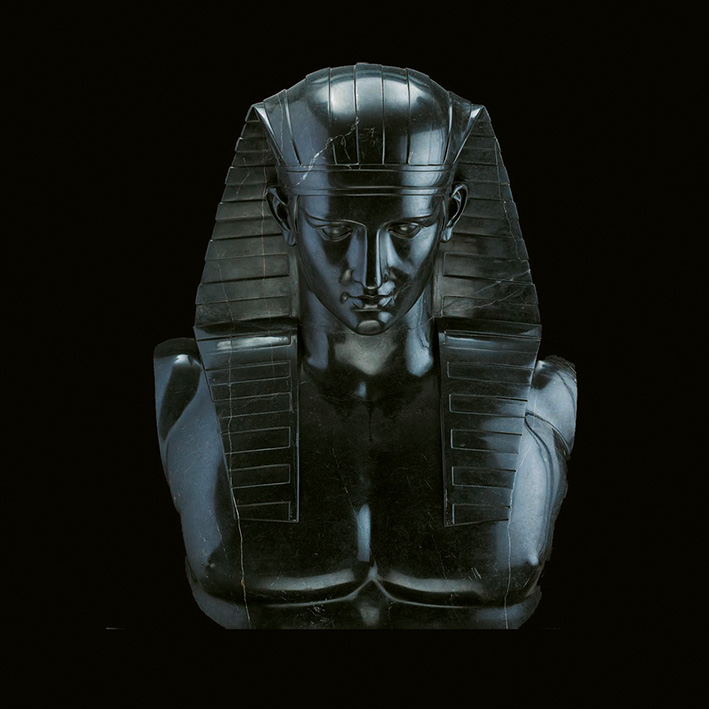
Neo-Egyptian bust of Antinous as Osiris
Déco sculptor
20th century, Black marble
Antinous was a young man with fine features, originally from Bithynia, with whom the Roman Emperor Hadrian fell in love. Hadrian took him to Rome and he was a companion on many of his journeys. During a trip to Egypt, the unfortunate lover drowned in the Nile and Hadrian, deeply affected by the loss, founded a city at the approximate site of the tragedy and had a temple erected for the beloved young man’s tomb. Egyptian priests, at Hadrian's request, deified the young man by representing him as Osiris, the god who was reborn from the sacred waters of the Nile. This sumptuous marble bust reproduces the features of the Antinous found in 1740, which was given to Benedict XIV and placed in the Capitoline Museum; it was then taken by Napoleon, who exhibited it in the Louvre. After its return to Italy, it was transferred to the Vatican's Egyptian Museum, in 1838. In France, many copies and versions of it were made, given the iconic value and power the effigy of the young man had acquired over the centuries, becoming a paradigm of beauty. This splendid copy owes much of its intense charm to the preciousness of the material – a finely polished black marble – and can plausibly be dated to the beginning of the 20th century. Compared to the prototype, it shows a heightened sense of melancholy.

